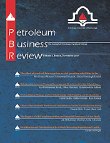Economic view of Maximum Reservoir Contacts (MRC) Wells Technology in Drilling Industry
The economic aspects of technological advances in the drilling industry using the MRC method compared to other drilling technologies have been investigated in this study. Field and survey methods from combined implementation research methods have been performed by a dynamic approach using Vensim software. Professors, drilling and reservoir engineering professionals in the oil and gas drilling industry, or equivalent positions, comprised the study's statistical population. Finally, 120 individuals were chosen by non-probabilistic sampling (judgment) and the snowball method. In the Vensim dynamic environment, the simulation completion time (based on the 2017 dynamics model) and the initial simulation time (based on the 2013 dynamics model) were adjusted to generate a flow diagram analyzing the economic aspects of technological improvements in this type of drilling industry. According to the causal tree results, the drilling industry's performance has the highest priority among studies of economic aspects of technological changes in the drilling industry using the MRC method, and it has a significant relationship with technological changes in the drilling industry. The sensitivity analysis chart demonstrated that with a change in the variable of indicators of the drilling industry at an average level of 5.25 to 5.5, the target variable, i.e., the performance of the drilling industry, has the least sensitivity and has no particular effect on it. On the other hand, by modifying the effectiveness of the drilling industry, effectiveness indicators at the average level of 6.95, the target variable has the maximum sensitivity and has a very significant effect on it.
- حق عضویت دریافتی صرف حمایت از نشریات عضو و نگهداری، تکمیل و توسعه مگیران میشود.
- پرداخت حق اشتراک و دانلود مقالات اجازه بازنشر آن در سایر رسانههای چاپی و دیجیتال را به کاربر نمیدهد.


